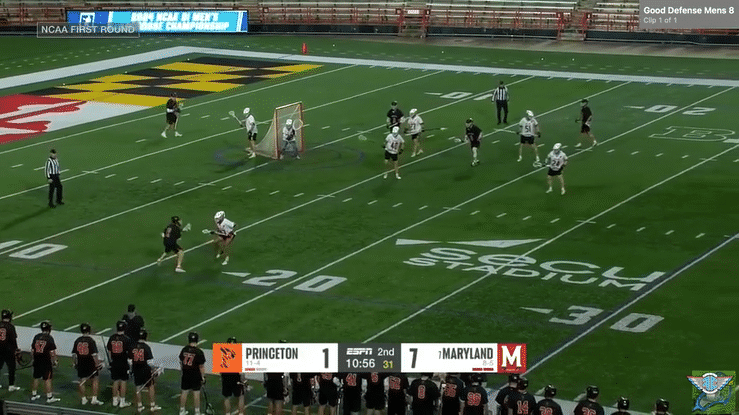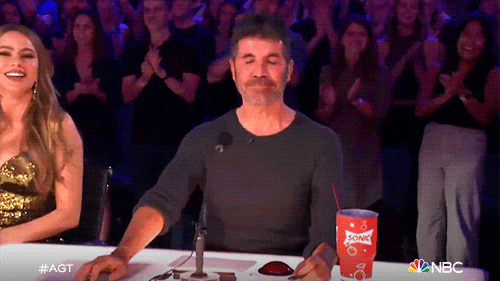- FCL Coaches Corner
- Posts
- Coaches Corner: Sunday 03/23/25
Coaches Corner: Sunday 03/23/25
The TEAM. Bo Schembechler. A book on coaching. Inside out defense 🔐. Look away!

Welcome back to FCL’s Coaches Corner. As coaches ourselves, we are obsessed with learning and growing in our professions. Every other Sunday, we distill concepts and share the resources we find interesting. It is our goal to share nuggets and insights that we’ve been able to gather over the years from great coaches in all sports. At the end of the day, we all want to have the greatest positive impact possible on our athletes.
In case you missed our email from the other week, check it out here.
If you were forwarded this email, you can get the free coaches newsletter here.
Matt Dunn & Deemer Class
Today’s Menu Includes:
🔦 Coach Spotlight: a quote from Bo Schembechler’s “the Team” speech.
🧠 Some Outside Inspiration: a book about the journey of coaching.
🤓 A Trip to the Principles Office: a lesson on inside-out defense.
🔥 A Webinar Freebie: a clip freebie from Richmond DC Paul Richards.
Let’s dive in…
FCL PODCAST & COACH COMMUNITY 🎙️ |
|---|
Want more coaching resources? Check out our free podcast on Spotify, YouTube and Apple podcast. … If you’re really ready to dive in, we highly recommend our men’s and women’s coaching communities. These include webinar guests from top college programs and other great coaches going deep into concepts and drills. |
Coach Spotlight: A Quote to Ponder 💭
“They can throw out all those great backs, and great quarterbacks, and great defensive players, throughout the country and in this conference, but there’s gonna be one Team that’s gonna play solely as a Team. No man is more important than The Team. No coach is more important than The Team. The Team, The Team, The Team, and if we think that way, all of us, everything that you do, you take into consideration what effect does it have on my Team?”
I currently coach at Highland Park with Mike Pressler. Coach Pressler is full of wisdom and great coaching nuggets — this is one of this all time favorite speeches that he shares with our team every year. Definitely worth the watch.
Matt
Outside Inspiration: A Book on Leadership 📖
"Coach to Coach" by Martin Rooney is a powerful leadership book framed as a compelling story. It follows a struggling coach who meets a mentor that teaches him essential coaching principles—focusing on purpose, connection, and impact. The book emphasizes that great coaches inspire beyond wins and losses, shaping lives through communication, accountability, and belief. Whether coaching sports or business, this book provides actionable wisdom for making a lasting difference. |
🤓 The Principles Office: Inside-Out Defense
Welcome back to The Principles Office, where we break down essential concepts we believe in and find interesting. Today’s focus is Inside-Out Defense—a fundamental approach that prioritizes protecting the most dangerous areas of the field before extending outward.

Yes yes, but obvious isn’t always easy.
Inside Out Defense
If we take a top-down approach to defense, we must start with the main objective and then drill down to the specific components that help accomplish it.
As mentioned in our blog on Positionless Defense: Building a Defense in Modern Lacrosse, a suitable defensive objective is:
Limit high-quality shots and regain possession of the ball.
If a defense makes it difficult for offenses to generate high-quality shots and excels at regaining possession, it will likely find success. Today, we will focus on one component of this objective: limiting high-quality shots.
What Are High-Quality Shots?
A simple defensive definition of high-quality shots includes:
Location: How close is the shooter to the goal? Are they within their range? Do they have a quality angle?
Disruption: Is the shooter on balance? Are we skewering or lifting gloves? Are we driving or popping the shooter away from the goal?
Beyond these, additional factors include shots off ball movement versus unassisted carries. Ball movement tends to create higher-quality shots, as goalies must reposition. Feeds from X to above the cage are particularly dangerous as they force defenders to turn their heads.
How to Think About Location
Location can be absolute or relative. To keep it simple, we define an absolute location where high-quality shots originate. This area is often referred to as "the Heart." While terminology varies, defining this area provides a foundation for defensive strategy.

Cornell Defensive Coordinator, Jordan Stevens, defined the Heart they use as 12-12-2 and in our coaches community. This is a good starting point, but there are certainly other dimensions that work.
Once an absolute location is established, flexibility is key. The definition of a high-quality shot can adjust based on matchups and player tendencies. For example, a 13-yard right-handed step-down shot might be considered high quality for an elite shooter but an acceptable risk against a player without proven range. This approach provides a framework for defenders to improve their spatial awareness and decision-making.

High quality shots come from in the Heart?!
Playing Inside Out Defense
A core defensive principle is playing inside-out defense—prioritizing the Heart over perimeter areas. This does not mean you have to pack it in and never extend, it just means that you always prioritize inside coverage before extending.
Before we go any further, this is not the only way to play defense. Some teams may choose to put a ton of perimeter pressure on opponents knowing the inside will be open, but they hope their pressure is disruptive enough to mask those openings.
While inside-out defense is conceptually simple, execution requires discipline. Below are key components to emphasize:
#1. Hold Ground in the Heart on Dodges Underneath

This is particularly true as a hot guy underneath the dodge when the ball is moving north to south (ie, down the alley). As dodges get started towards the Heart, if the player you are guarding vacates you need to to hold your ground if you are the hot player (ie, the slider). During these moments, the ball carrier’s access to the Heart is a greater threat than our player popping behind it. We can rely on our teammates to support us on a throwback.
Notice how #40 on Maryland (Colin Burlace) holds ground under the dodge and “sinks” into his potential slide to keep a good angle. This is a great skill for sliding defenders. On the throwback, he is able to recover himself, but his teammate Will Schaller (#27) is ready to rotate just in case.

#40 Colin Burlace sinks with the dodge and holds valuable space in the Heart.
This is inside-out defense, because Colin Burlace prioritizes defending the Heart over his own man that pops behind the dodge.
#2. “Chest to Chest” on Crease When Ball is at X
Prioritizing inside-out defense means emphasizing off-ball players on the crease rather than focusing on the ball carrier at X. Defenders should be chest-to-chest with crease players, staying ready to check feeds inside. The ball at X can be tracked with shoulder glances. If a slide is needed, defenders can peel off and open their chest to the ball on the slide.
Notice the players on the crease for Cornell here in this invert. They are all lined up chest to chest and following the ball over their shoulders at X. As the dodger pushes GLE, the hot guy on the crease “peels off” and fires into a slide.
This technique limits the amount of time the slider is facing the ball and leaving the crease less protected, allowing us to prioritize the inside while the ball is in a non-threatening location (ie, below GLE). Another point I really like is how the adjacent wing for Cornell has his stick to the inside clogging up the middle as he starts to release forward.

Cornell lines up “chest to chest” on the crease during Richmond’s invert to protect inside first.
#3. Plug from X on Sweeps to Middle
Defending sweeps can be challenging due to the options it gives the offense. However, if we use all of our pieces well on defense and can keep the sweep “flatter” east/west rather than allowing them to knife north/south into the Heart, we can support much better.
A big key to defending an sweep is getting your defender(s) at X to plug above the cage. In this clip below, you’ll notice Ajax Zappitello for Maryland plug up from X on the sweep and get the caused turnover. This is a simple “flow with the ball” principle, but so very critical to defense. If we can outnumber the offense above the cage on sweeps it gives us a big advantage.

#4. Inside Out Rotations
Rotating inside-out helps crowd the offense and limits open lanes. In situations such as man-down defense, transition, or recovery, defenders should rotate in a U-shape through the Heart with their sticks up in the skip lane.
Flat rotations leave passing lanes wide open and create longer rotations. Inside-out rotations also improve approach angles through the middle of the field, keeping defenders in strong positioning.
#5. Sticks Inside, Body Outside
This was covered in our first Coaches Corner. Keeping sticks inside while positioning the body outside reinforces inside-out defensive principles and disrupts offensive movement.
The is a great clip of Georgetown’s defense flowing in unison and working their stick heads towards the crease (inside) to clog up passing lanes and openings on the inside. This can make the field look and feel much more crowded to the offense. If we use our stick effectively off the ball, we can cover so much more space as a unit.

Watch Georgetown flow with their bodies and sticks as the ball moves. Poetry.
Here’s another clip of Notre Dame executing this principle. As they prepare to slide from the crease to a dodge across the top, notice the adjacent player recognize the need to support to the skip lane through by having his stick inside in the lane and body outside towards the adjacent player he is guarding. Even if the ball goes forward, the Notre Dame defender will still have an angle to approach through the lane. He is prioritizing more dangerous over less dangerous.

Inside out defense — stick inside, body outside = NUGGET.
By emphasizing these principles, teams can create a disciplined, inside-out defensive structure that limits high-quality shots and increases defensive efficiency. While no defensive strategy is one-size-fits-all, reinforcing these concepts can help defenders anticipate threats, maintain structure, and improve team cohesion.
Thanks for taking a trip down the hallway. Stay tuned for more content all spring and email us at [email protected] with any questions and let us know your thoughts.

Thanks for tuning in— catch you on our next Coaches Corner.
🚨 Webinar Freebie 🚨
We believe our coaching community is the best resource on the market for any men’s or women’s coaching staff to continue developing through new drills and strategies. It includes over 30 college coach webinars, 100+ drills for offense, defense and full team compete.
As a perk of this newsletter, you get a free clip from one of the webinars. Today’s clip is from from Richmond Men’s Defensive Coordinator, Paul Richards.

Coach Richards presented on Richmond’s slide and recovery drills.
🔦 COMMUNITY TOUR: Watch Community Tour Here.
🚨Bonus🚨
Coach Class just dropped a new Youtube video, teaching some women’s zone offense looks from Duke!



